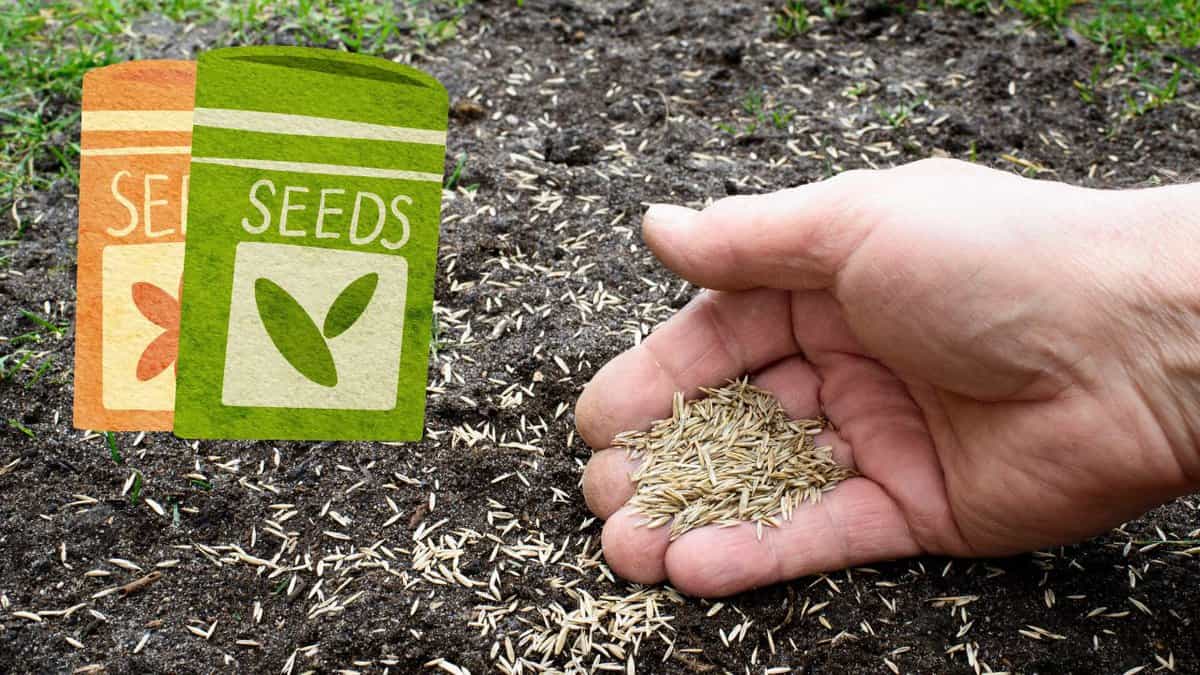Most people prefer seeds over turf when it is to make a lawn. For sure, seeded lawns require less effort and money. Indeed, the result comes out excellent if you manage to be persistent and know how to sow grass seeds on the lawn.
Definitely, sowing seeds on the lawn is not a big deal. But many of us fail to get an excellent result because of some common mistakes. Mostly, we don’t follow a set of proper steps to sow grass seeds and think about some basic factors regarding the process.
Well, if you are planning to make a lawn or just want to sow seeds on your old lawn, I am sure this article is essential for you. It won’t take more than a few minutes to read the entire article, but I guarantee that you will learn something very essential about sowing grass seeds on the lawn.
Basic Factors to Check before You Sow Seeds on the Lawn
Before sowing seeds, you must prepare the entire area carefully. Besides, there are a few factors you must take care of. Otherwise, while sowing seeds, you may have to face difficulties. However, make sure to check the following facts before you start it.
1. Choose the Right Time to Sow Seeds
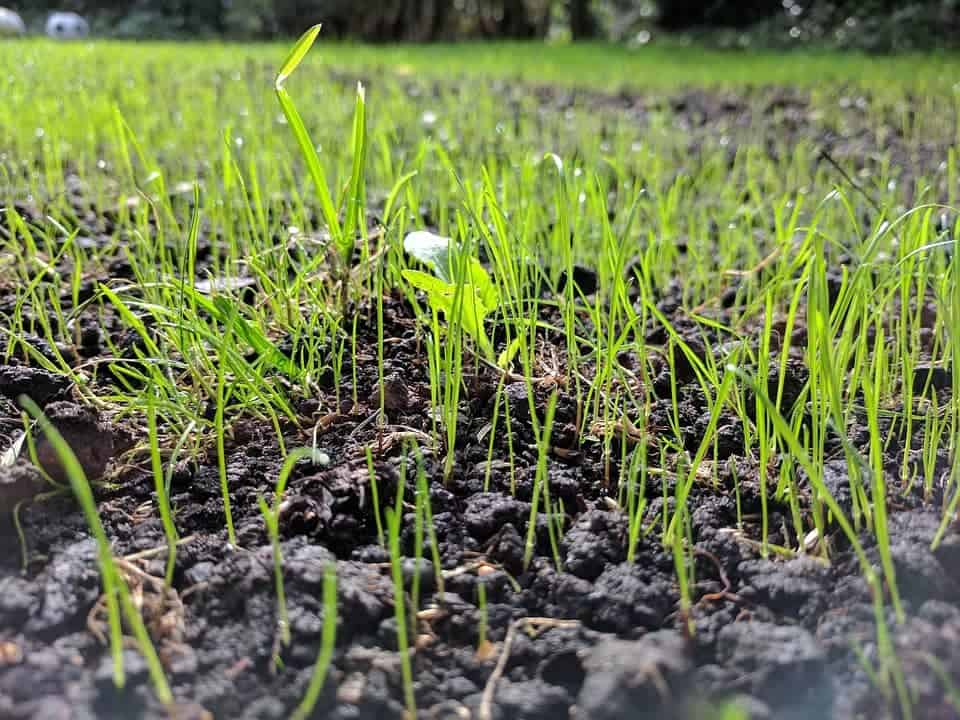
So, it is always suggested to sow seeds either in spring or Fall. If you are planning to choose spring, make sure to start in the early spring so that the weather doesn’t start to be so hotter. For the same reasons, choose early Fall so that it is not too cold anyway.
You should also remember that hot or cold weather can ruin your effort of sowing grass seeds. The hot weather can burn the seeds, while the cold weather can freeze them easily. So, these seeds will be inactive and never germinate with a reasonable germination rate. That’s why make sure to choose the right time to sow seeds.
2. Choosing the Right Seeds for the lawn

- The weather in your area.
- The types of soil on your lawn.
- The type of lawn you want to have.
- Grass color you prefer.
- Grass type you prefer.
- Sun exposure the area gets.
- The time when you want to sow the seeds.
- Lawn maintenance, you can manage based on the grass type.
So, you need to consider these facts while choosing the seeds. You must know that there are cold weather and hot weather seeds. So, considering the fact of temperature is the most essential in this case. Also, you need to check the type of soil and ensure the grass seeds you choose can grow well on that specific soil type.
3. Buy Sufficient Seeds for Your Lawn

As you are determined to sow seeds on a vacant area to make a lawn, you have to buy sufficient seeds. It is quite a crucial fact, and many people just ignore it. In most cases, people purchase sacks of seeds and don’t judge if that is enough for the land.
They don’t think too much and just spread what they have. But when the seeds germinate, it won’t be as they expect. The grass may not be thicker enough or just make massive traffic that doesn’t look beautiful. So, buying enough seeds is more important than you expect.
The exact amount of grass seeds that you need also depends on two factors. The first one is the type of grass seed. Generally, you will need 2 pounds of Bermuda grass seeds for approximately one thousand square feet. But if it is ryegrass, you must need around 9 to 10 pounds for the same place. However, you can learn about the amount of grass seeds you will need for each type of grass here in this link: How to calculate the number of grass seeds for your lawn.
Another fact is the condition of the lawn. To overseed an old lawn, you won’t need the same grass seeds you’ll need for a new lawn. Generally, you will need half of the grass seeds that you need for a new lawn to overseed an old lawn of the same diameter.
4. Prepare the Soil for the Seeds
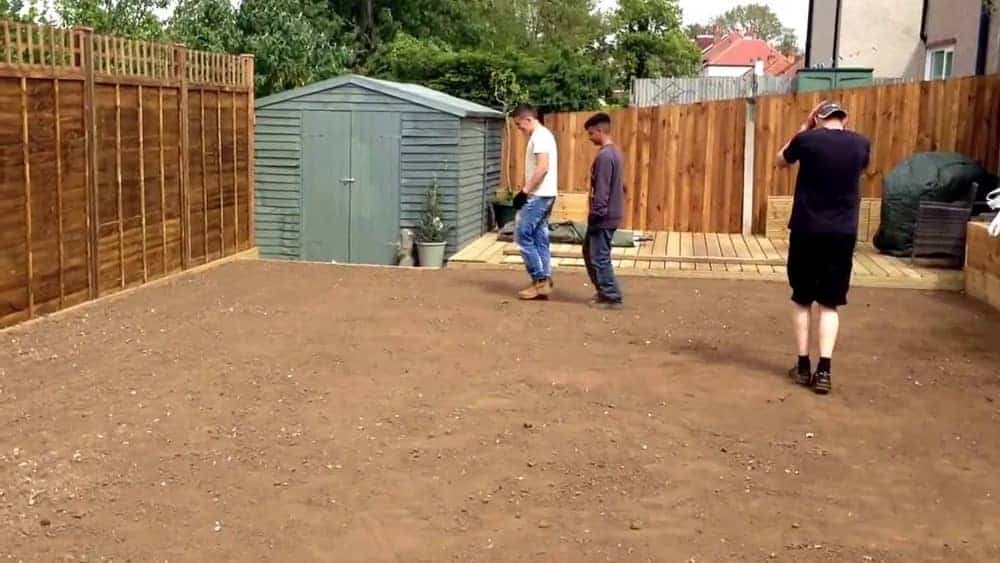
However, the entire process is crucial, and you have to follow a specific procedure to prepare the ground for the seeds. The process includes removing the weed, fixing the level of pH, raking the ground, leveling the surface, heeling the area, using pre-seeding fertilizer, and watering the land to make it fertile.
Once you make sure everything is ready for spreading the seeds and it is an appropriate time for it, you can start. The next section will tell you how to appropriately apply the seeds on the land. So, miss it at your own risk.
How to Sow Grass Seeds on the Lawn: Easy Steps to Follow
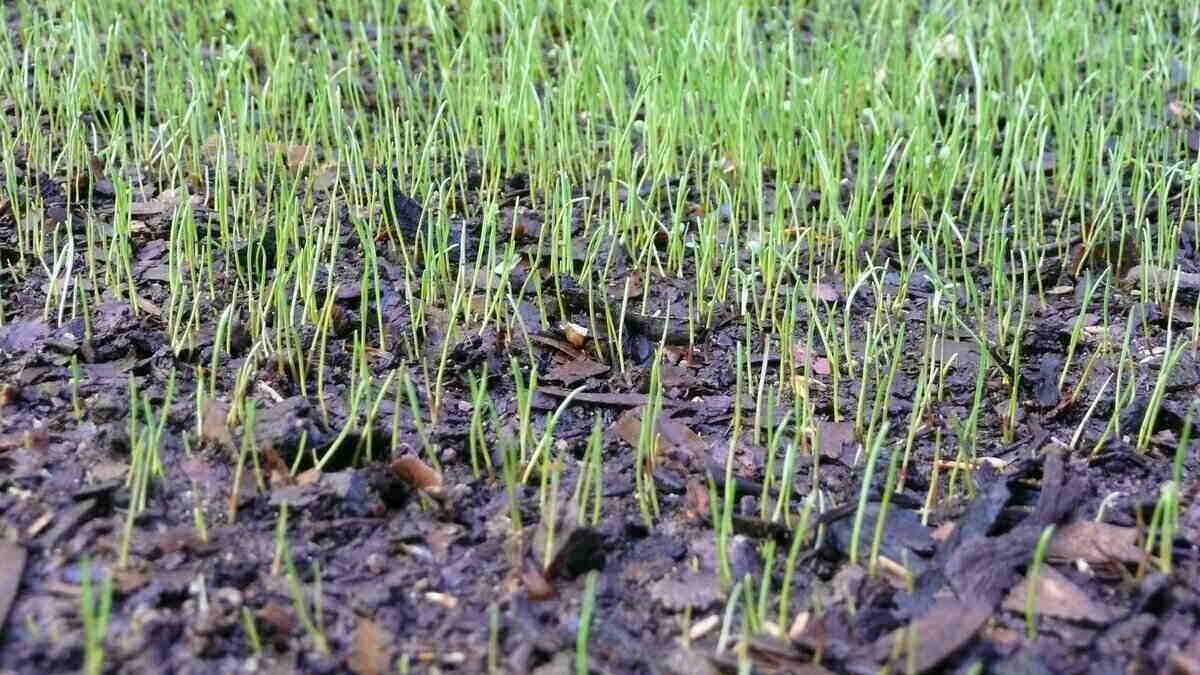
Step 1: Make Sure You Have Everything, You Will Need to Sow Seeds
You should start the process by collecting all the tools you will need to sow the seeds. I am sure that most of the tools are available at your home. Still, there may be something you need to buy or collect from the shop.
First of all, you will need sufficient seeds and a spreader to spread them. This kind of seed spreader is commonly known as the broadcast spreader. However you can spread the seeds by hand, but it won’t be perfect as you cannot spread them evenly.
However, you will also need a roller, a rake, a watering hose, or a sprinkler to water the lawn. Also, you may need a spade and weedkiller if your lawn area is full of weeds and debris.
Step 2: Check the Condition of the Soil

Besides, you need to ensure that the soil temperature is average and not muddy. If there is rain in your area, you should wait for a few days to make it dry and suitable for sowing seeds.
Step 3: Spread the Seeds on the Area

However, remember that you need to put out around 12 to 15 seeds in every square inch. If it is an older lawn where you are overseeding, you have to put 5 to 7 seeds in every square inch.
And if you are not using any spreader, you can try it by hand; you need to divide the seeds into two parts. You should sow the first part horizontally and stretch the second part vertically. This technic will help spread the seeds evenly.
Step 4: Rake the Land
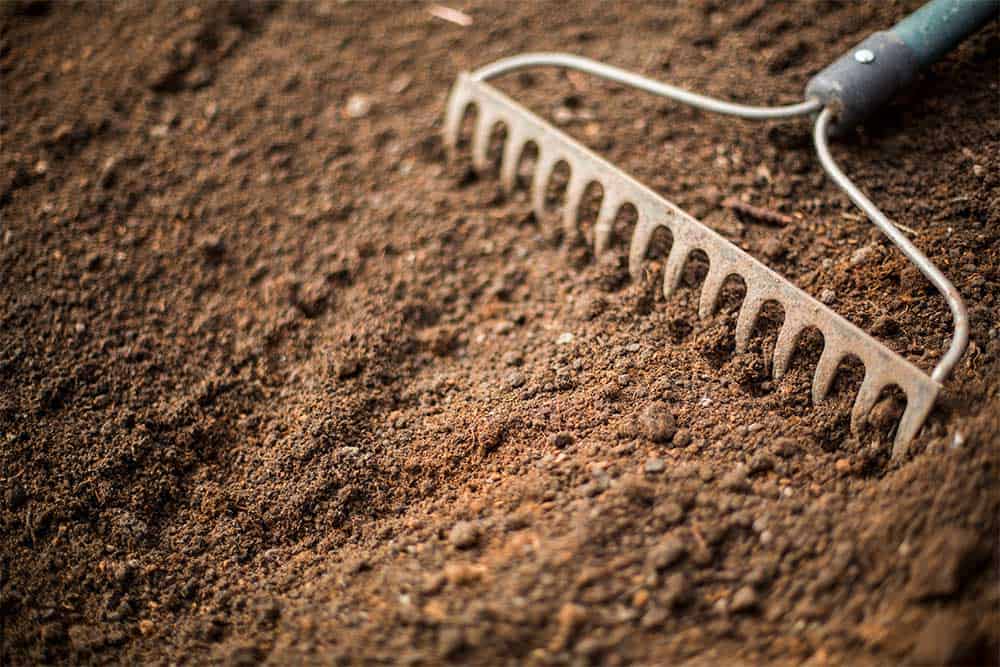
When you firmly rake the land, the seeds will come closer to the land, so they can easily germinate. However, you must take the rake and use it gently over the land. Make sure to do it twice or more to ensure that all seeds are under the soil or get mixed with the soil.
Step 5: Use a Roller

However, you need to go over the land rolling it so that the seeds can easily get buried in the soil. But make sure not to do it with more pressure. You should gently and firmly role the area. In this case, it would be helpful if the weather was not windy. Otherwise, the seeds can blow up from the soil. So, try to choose a calm and sunny day.
Step 6: Make a Mulch Bedding
However, if your area is in an open space and it has winds, you should add a layer of mulch to the land where you sow the seeds. It will help the seeds stay stable in the soil and prevent weeds from product on the land. We prefer adding a layer of mulch that is around 6 to 7 millimeters in thickness.
Step 7: Water the Land Frequently

Here, you can use your sprinkler system or simply a hose to water the area. However, if it is raining in your area, then you can skip watering for a while. But too much rain or flood can ruin the process anyway. So, you have to pick the time of sowing seeds carefully.
Once you have done everything perfectly, it takes around 3 to 5 weeks to germinate the seeds and grow the grass. When it is around six weeks, you should apply fertilizer to the lawn. In this case, you should choose the right fertilizer for the new grass.
FAQ
Q: Which month is good to sow grass seed?
A: March and September are the best months to sow grass seeds. If you are choosing spring to sow the seed, then March is the best month; for Fall, it must be September. But you should choose May or November to sow seeds anyway.
Q: Is it essential to rake the grass seeds after spreading them?
A: Yes, it is essential to rake the seeds after you spread them. The seeds will be just on the ground when you only spread them. You need to turn the soil over by raking it. The seeds will then spread here and there firmly.
Eventually, they can be able to mix with the soil properly when you rake it. That’s why to increase the germination rate; you should rake the seeds right after you sow them.
Q: How long does it take to germinate grass seeds?
A: Generally, grass seeds take one and a half to two weeks to germinate. But they may take longer, and it depends on a few factors. The time of grass seed germination depends on the following facts.
- The type of grass
- How perfectly they are sown
- Type of soil in the lawn
- Sun exposure and shade
- Fertility of the soil
- The age and quality of the seeds
Q: How frequently should I water the grass seeds?
A: You should water the grass seeds twice a day to keep them moist. Seeds need water to germinate and stay active. So, you need to water the area properly and keep it moist all the time. If it’s not hot outside, and if it’s raining, you have to customize the watering schedule as well. Remember that too much water is not good for the seeds.
Q: Can I walk on the land where I have put seeds?
A: It is better not to walk on the land where you have spread the grass seeds. Most of the grass seeds are dry, and they are quite fragile in nature. So, traffic on the land where they are spread can break them into pieces. So, it can ruin your effort to sow the seeds on the land.
Final Verdict
We are at the end of our discussion. Here, I just want to acknowledge that the beauty of your lawn quite depends on how you prepare the ground for the seed and how successfully you sow them. So, you shouldn’t ignore this fact and just spread them however you want.
Hopefully, now, you have no questions left about how to sow grass seeds on the lawn. Still, if you have any other confusion left, feel free to knock us in the comment section. We love to help you make your lawn in any way that is possible for us.
However, make sure to follow the steps to sow the seed sequentially. And don’t forget to let us know how it works. We will wait for your response. Thank you.

